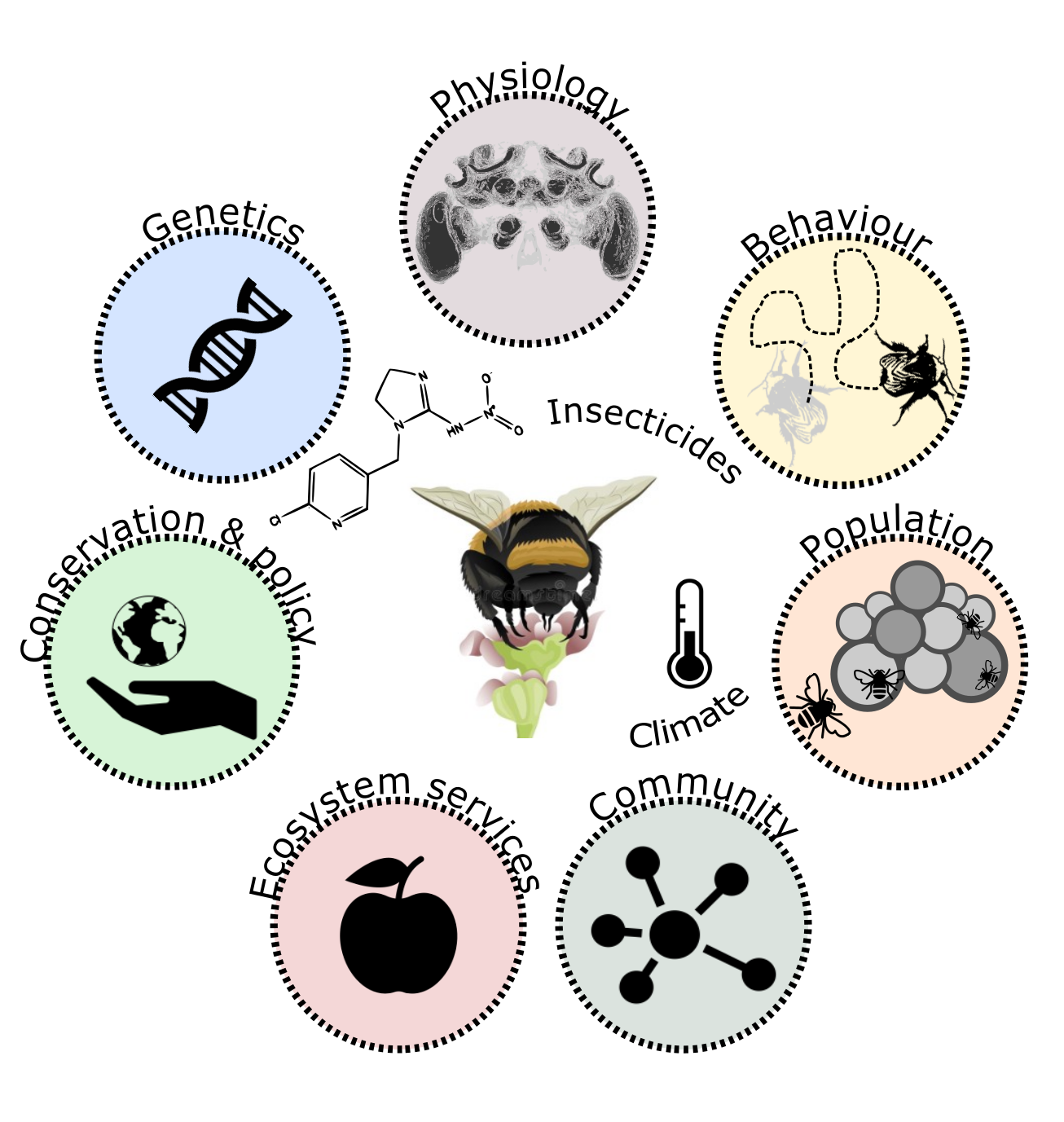Dataset / Dr Richard Gill
Pollinator crisis: making a beeline to save the planet
Words: Peter Taylor-Whiffen
Context 
The world’s pollinators are in crisis. The likelihood of a bumblebee population surviving in any given place has declined 30 per cent in a single human generation – and that is disastrous for all of us. A decline in pollinators affects the health and diversity of plants, with further implications for the animals that eat them, resulting in millions of direct and indirect adverse consequences on the balance of nature, all the way up the food chain to the food on our table.
Background
“We know there are a number of factors for this decline – mostly caused by humans,” says Dr Richard Gill, a Senior Lecturer in the Department of Life Sciences at Imperial’s Silwood Park Campus. “These are mainly to do with land use changes resulting in loss of habitat, the use of chemicals on that land and climate change. We know these factors have the potential to threaten pollinators, but we don’t know to what degree, and how they interact. If we can quantify the impact of all these factors, we can develop more accurate models to predict future insect responses to varied environmental scenarios and inform evidence-based decision making.”
Methodology
So, Gill and his team are attempting to understand and mitigate how environmental stressors place insect pollinators at risk. There are several strands of ongoing research, including studying bees’ genetic, behavioural and population responses to the impacts of environmental warming, pesticide levels and nutritional deficits. They have also been measuring wing size and body symmetry using data from multiple museum collections, to establish short- and long-term trends. The team have used a variety of approaches, including genome sequencing, microchipping, developing bee flight mills, shape analysis using machine learning, and even studying bees found in the Arctic.

Findings
“The results have been both fascinating and worrying, particularly with regard to pesticides and climate,” says Gill. For instance, a previously held assumption was that bees would naturally avoid crops sprayed with insecticides. Not only is this not necessarily accurate, but in the case of neonicotinoids (chemically similar to nicotine) the reverse is true. “Further, we applied the advancing technology of micro-CT scanning on the heads of adult bees that had been exposed to pesticides as larvae. We found the neonicotinoids impeded growth of the brain, but primarily in the regions known to be involved in learning. So, while these pesticides do not kill the bees, they do severely impact their behaviour and productivity.” Gill has also been tracking the numbers, size and shape of pollinators over the past century, with support from colleagues at the Natural History Museum among others. With researcher Aoife Cantwell-Jones (as part of an MRes Life Sciences thesis in 2020), they have used collections to track what has been placing bees under stress over the 20th century. “A normal, healthy bee will develop symmetrically, but by studying their morphology, we have found that where bees have developed asymmetrically, it has correlated with warmer, wetter years and other specific meteorological events,” says Cantwell-Jones, who is now a PhD student in the Gill group studying Arctic bee responses to climate change.
Outcomes
In his latest paper, Gill examines how pesticide and climate change can interact to affect bee behaviours. “We are finding that the risk of pesticides is completely temperature dependent, so climate change and the weather extremes it brings will increase the pesticide risk to bees. This is something that has not been appropriately quantified and has limited our ability to predict risks across the world’s climate regions and under future warming scenarios. Hopefully, with this information and further research, we can lobby decision makers in industry and government to understand these links, and realise what they need to do to save our bee populations, secure our food production, and safeguard our planet.”
Dr Richard Gill is Senior Lecturer in the Department of Life Sciences at Imperial's Silwood Park Campus.


